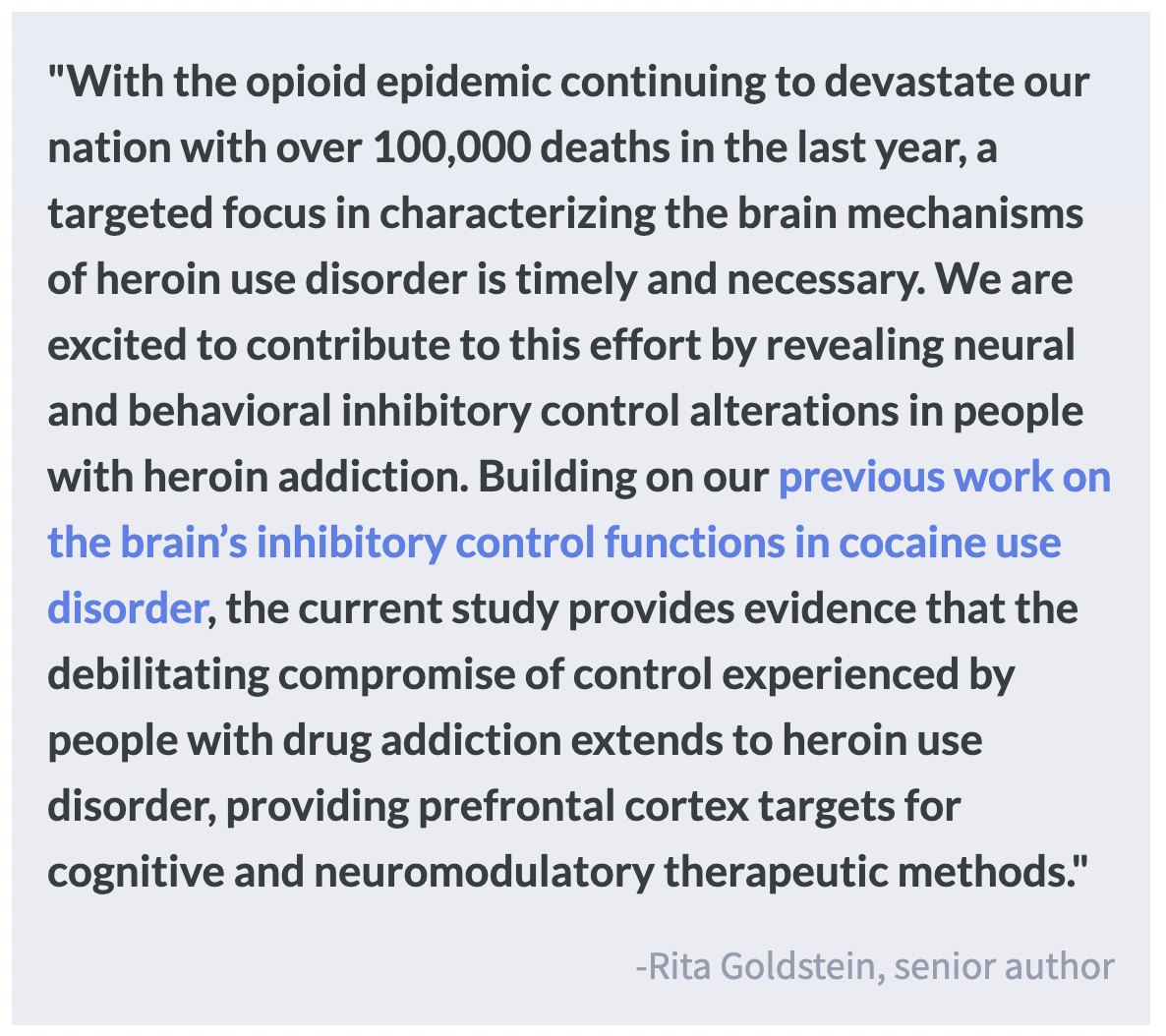Neural Underpinnings of Impaired Inhibitory Control in Individuals with Heroin Use Disorder
Post by Leanna Kalinowski
The takeaway
Researchers have uncovered a key role for the prefrontal cortex in mediating the impacts of heroin use disorder on inhibitory control.
What's the science?
Substance use disorder is a serious mental health condition in which there is uncontrolled use of a drug despite its harmful consequences. One model that proposes the neurological underpinnings of substance use disorders, called the “Impaired Response Inhibition and Salience Attribution Model,” posits that the disruption of two brain functions contributes to the cycle of substance use disorders. In this model, response inhibition (i.e., the ability to control one’s impulses) is decreased in individuals with a substance use disorder, while salience attribution (i.e., an increase in attention toward drug cues) is increased. These behavioral impacts are associated with decreased activity in the prefrontal cortex. While these behavioral and neural impairments in inhibitory control are seen with substance use disorders across all drugs of abuse, they have been underexplored in heroin use disorder. This week in the Journal of Neuroscience, Ceceli and colleagues mapped the neural underpinnings of impaired inhibitory control in heroin use disorder.
How did they do it?
The researchers recruited 65 participants for this study: 41 individuals with a heroin use disorder (iHUD) and 24 age- and sex-matched controls. After completing a battery of clinical diagnostic tests to measure the severity of their heroin use disorder, participants underwent a test of inhibitory control called the stop-signal task.
The stop-signal task was divided into two types of trials: “go trials” and “stop trials”. During “go trials”, which comprised 75% of the task, participants were shown a white arrow on a computer screen and were instructed to indicate its direction (right or left) as quickly as possible. During “stop trials”, which comprised the remaining 25% of the task, participants were asked to stop themselves from responding when the white arrow turned to red. The length of time that it took for the arrow to change from white to red, called the “stop-signal delay”, was initially set to 200 ms and was subsequently adjusted based on the participant’s performance. If the participant successfully stopped their response, the next stop-signal delay was increased by 50 ms, which made the next trial more difficult. Conversely, if the participant did not successfully stop their response, the next stop-signal delay was decreased by 50 ms, which made the next trial easier. Brain activity was measured during the stop-signal task with functional magnetic resonance imaging (fMRI).
What did they find?
First, the researchers calculated the proportion of responses in “go trials” to false-alarm responses in “stop trials”, and found that iHUD had a significant impairment in distinguishing between the two types of trials. This suggests that iHUD experienced impairment of inhibitory control during this task. Next, the researchers identified several key brain regions that were activated during the task. During inhibitory control, iHUD had lower activity in the anterior and dorsolateral prefrontal cortex, which are key brain regions that regulate cognitive control. This was associated with a higher severity of heroin dependence, suggesting that the behavioral and neurological effects exhibited during inhibitory control are related to heroin use severity.
What's the impact?
Overall, this study uncovered the neurobiological underpinnings of inhibitory control in iHUD, which is the first time that the neurobiology of inhibitory control in heroin use disorder has ever been mapped. Results from this study may help guide future targets for preventing and treating heroin use disorder.


